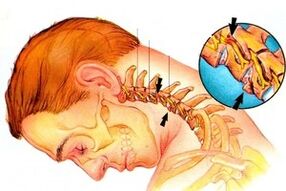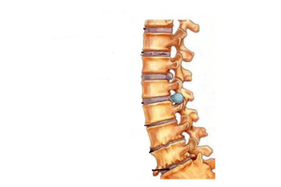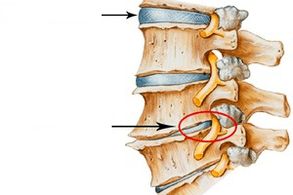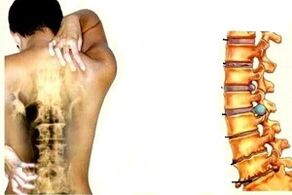
Diseases of the musculoskeletal system are one of the most common diseases on Earth.Few people manage to avoid them completely, especially after 40 years, although experts admit that problems with the spine, muscles and joints have "younger" and much young people are increasingly protesting for pain.
The mistake of this is the lifestyle, which has already become familiar with many: inactivity, prolonged stay in a position (more often behind gadgets and screens), lack of physical activity.As a result, posture, salts and other harmful substances are accumulated in the body, the functions of the musculoskeletal system are reduced and therefore the internal organs can be deformed.
Most of the time, osteochondria is found from such diseases, in which people are subject to an older and quite young age, as well as to osteochondal problems with lumbar and cervical spine.The second type of frequency of osteochondicism, the cervical, is an unpleasant disease, and in addition - progressive, without treatment, a significant deterioration of lifestyle to disability.This means that it is necessary to recognize the symptoms of this disease in time and in time to contact an orthopedist or a sponyl for treatment.
How does cervical osteochondria develop
If a person leads a sedentary lifestyle or, because of his or her profession, he is in the same position for a long time, then the risk of dealing with osteochond is very high.With the development of the disease, the changes occur on intervertebral discs, deform and change their structure.
The intervertebral discs are between the vertebrae, their task is to maintain the spine to make it flexible and durable.There are seven vertebrae in the throat, with the help of which the head, the neck is supported and rotated and so on.The cervical vertebrae are very close to each other, so they are injured and even shifted from little physical activity.The risk of the disease lies in the fact that the nerve endings of the spinal nerve are affected, which affects the vessels that provide the brain's brain.In turn, the brain does not receive vital substances and this can lead to the development of many other, more serious illnesses that can cause a disability and even the death of the patient.
There are many causes and development of cervical osteochondicity.Among the most common and frequent reasons, the following can be distinguished:

- Reduced metabolism in the body, in particular, in the cervical area, hormonal imbalance.
- deposition of salt;
- Low physical activity, sedentary lifestyle.
- Great stay at a stop (on the computer, the steering wheel of the car, and so on).
- Inappropriate nutrition.
- Overweight.
- injuries and throat bruises.
- Hyphema of the body.
Osteochondria also occurs on the background of chronic diseases of the musculoskeletal system, such as scoliosis or rheumatism.
In addition, an osteochondria often leads to a genetic predisposition of the body.
But regardless of the causes, osteochondria must be treated as soon as its first symptoms occur.
Signs of osteochondicity
The osteochondria in this spine does not always arise abruptly and unexpectedly.Most often develops slowly and the symptoms are intensified over time, their number increases.The more the vertebrae are damaged and the nerve roots are damaged, the more remarkable the signs are.
The first symptom to be paid is the pain of the different force in the cervical spine, which gives other parts of the body - the back of the head, medium, ears, forearm, shoulder, breasts and so on.In case of pain, consult a doctor to determine if it is truly osteochondria, which is often similar to symptoms to other diseases.
Other signs of osteochondry
- The pain in the throat is reinforced by loads or head turns.
- The patient feels numbness, burning or tingling at the edges.
- Headaches and dizziness, a damage, the patient may complain about darkness and flies in his eyes, noise in his ears.
- With a sharp turn of the head, the fainting is possible.
Osteochondria is also characteristic of cervical osteochondicity:
- violation of coordination;
- Heart pain.
- Deterioration of vision and hearing.
Osteochondal varieties
Depending on the type of nerve sting and the nature of the development of the disease, doctors distinguish various syndromes:
- Spine syndrome.
- Spine syndrome.
- Heart syndrome.
The root syndrome is a sting of the first pairs of the cervix ends.Pains are felt on the throat, given to a shoulder blade, under the back, shoulder, forearm.
With the spine syndrome, the patient experiences a pulsating pain in the back of the head or temples or pain burning in the neck, the back of the head, which strengthens the head during sleep, with cough, gives the chest.
With heart syndrome, the symptoms first look like angina, but the pain does not pass after taking nitroglycerin, lasts several hours and can exacerbate when moving deep breathing.
Symptoms of damage to specific vertebrae
The treatment of osteochondrication is prescribed on the basis of which nervous termination has been damaged.There are only eight of them, each of them is above the cervical vertebra.It is possible to determine which of the vertebrae is beaten by symptoms corresponding to a certain nervous fate of the spine.
Damage to the nervous end and characteristic pains

- The first and second sections: the sensitivity of the back of the head, the pain in the area of the liabilities and occipital areas breaks.
- The Third Section: Nutrition of the Neck in the field of sting, speech dysfunction, language sensitivity.It happens very rarely.
- The fourth section: Pain and numbness in the clave and/or shoulder, respiratory violations, heart pain.
- Fifth section: shoulder pain, pain on the outer surface of the shoulder, reduced limb sensitivity.
- The sixth and seventh sections: throat pain, blade, forearm, back, lower back, reduced hand sensitivity, fingers.The most common defeat.
- The eighth section: neck pain, back, elbow, numbness of the small fingers of all limbs, the French feet and brushes due to blood circulation disorders, lack of skin sensitivity and gives it to the feet.
Diagnosis and treatment of cervical osteochondicity

To reliably establish a diagnosis of "cervical osteochondrication", you should definitely consult a doctor.Many symptoms of osteochondrication are similar to the signs of other diseases, so it is important not only in time to start the treatment of osteochondry, but also to lose no other pathology.
In the event of suspicion of osteochondry and signs of nervous disorientation, the doctor defines radiography, with a tomography calculated by damage or magnetic resonance imaging, ultrasonic additional dopography and double -sided scanning.
Based on these studies, the nature of the pain syndrome and all of the other symptoms, you can determine which discs are damaged and begin the necessary treatment, which will restore affected vertebrae and nerve roots and will not allow for the development of osteochondrial complications.
The treatment is prescribed by the doctor, is usually complicated.First of all, it should relieve the symptoms of pain, which, with cervical osteochondria, are sometimes practically unbearable and spread not only to the throat but also to other parts of the body.
To do this, use painkillers on tablets, but in the case of excessively severe pain, non -serpeal anti -inflammatory drugs, as well as heating and painkillers, are not indicated.
Since drugs and ointments only relieve pain and other symptoms of neck osteochondicity, but are not exempt from its cause.After the painful sensations have been reduced, the patient has been prescribed massage, physiotherapy and physiotherapy.The patient presents a diet, drugs that improve blood circulation and support body functions, tablets and injections, as well as chondroprotects that help protect and restore intervertebral discs.
In some cases, baths, paraffin applications, reflexology, Hirudotherapy are prescribed as an additional treatment in the patient.Popular methods of dealing with cervical osteochondryosis often help to return the patient to the usual lifestyle, but they should only be used in combination with traditional methods and after consulting a doctor, as traditional medicine may have contraindications and use of the body.
Complications and prevention of the disease

Remember: The cervical osteochondria treatment should start as quickly as possible.The more you get a visit to the doctor, the more difficult it will be to cure the disease and in the meantime it can cause various complications.The cervical spine osteochondria is very dangerous that there are many blood vessels and nerve grids that feed the brain in this section.
Any violation can cause problems with brain circulation, neurological disorders, including migraines and hypertension, affect the heart, respiratory system, hearing, vision.
If osteochondria begins, more serious consequences in the form of ischemia of the brain, stroke or rhizopathy is possible - a disease in which processes are formed in affected vertebrae, partially or fully deprives the body of sensitivity.But this is not the worst thing, since in severe osteochondria, the spinal cord is squeezed, which can cause the patient's death.
Therefore, it is very important to hear the symptoms as soon as possible and to contact a specialist who will help you return to a full life.And to avoid such a disease as cervical osteochondria, you need to move more, avoid physical activity, monitor weight, eat properly and balanced and regularly visit an orthopedic or vertebra.



























